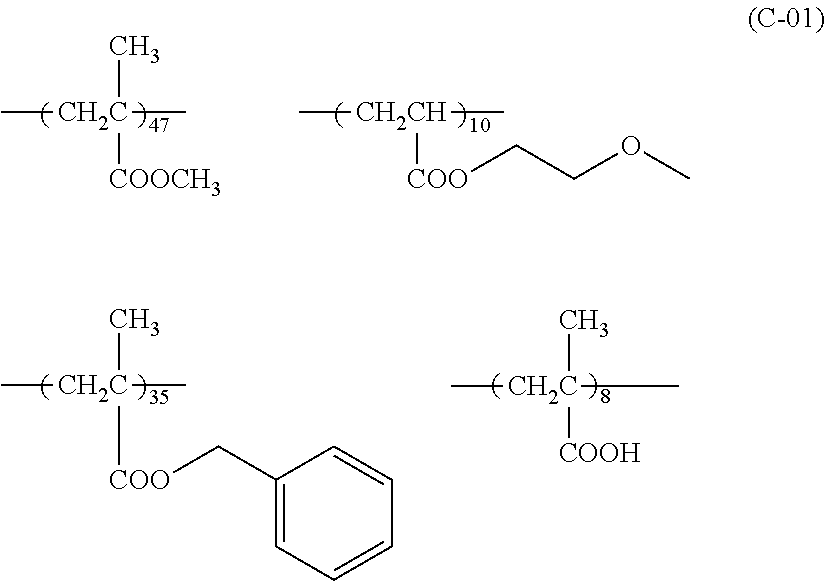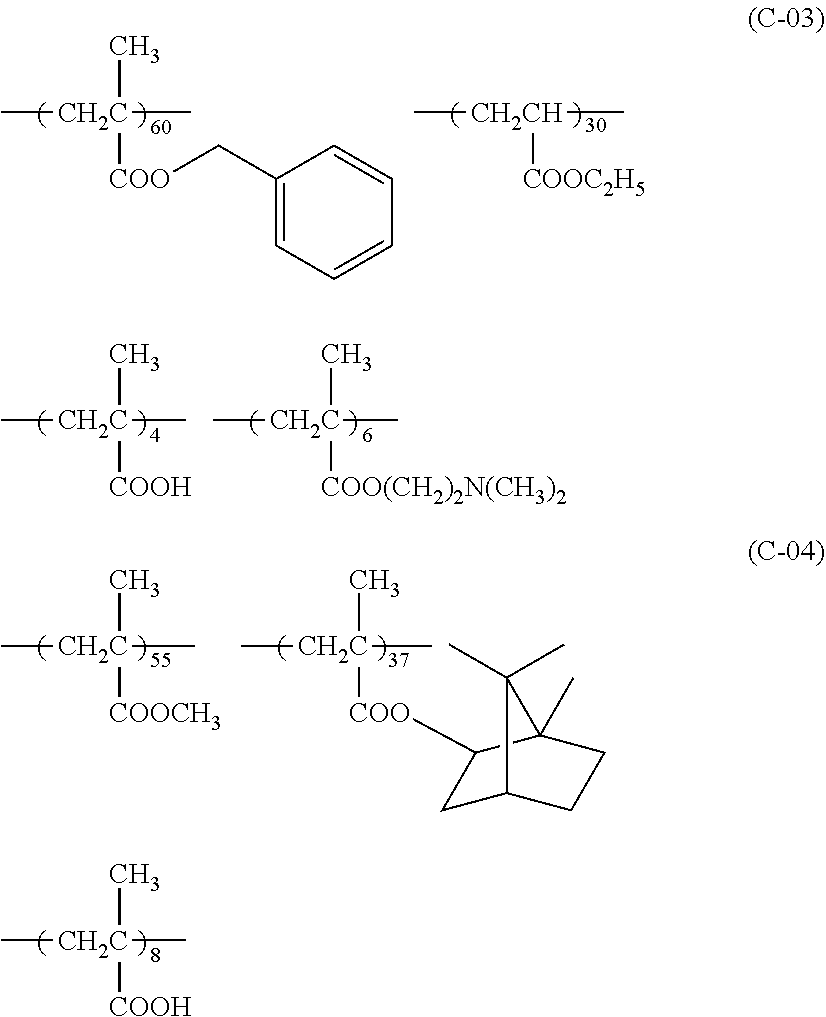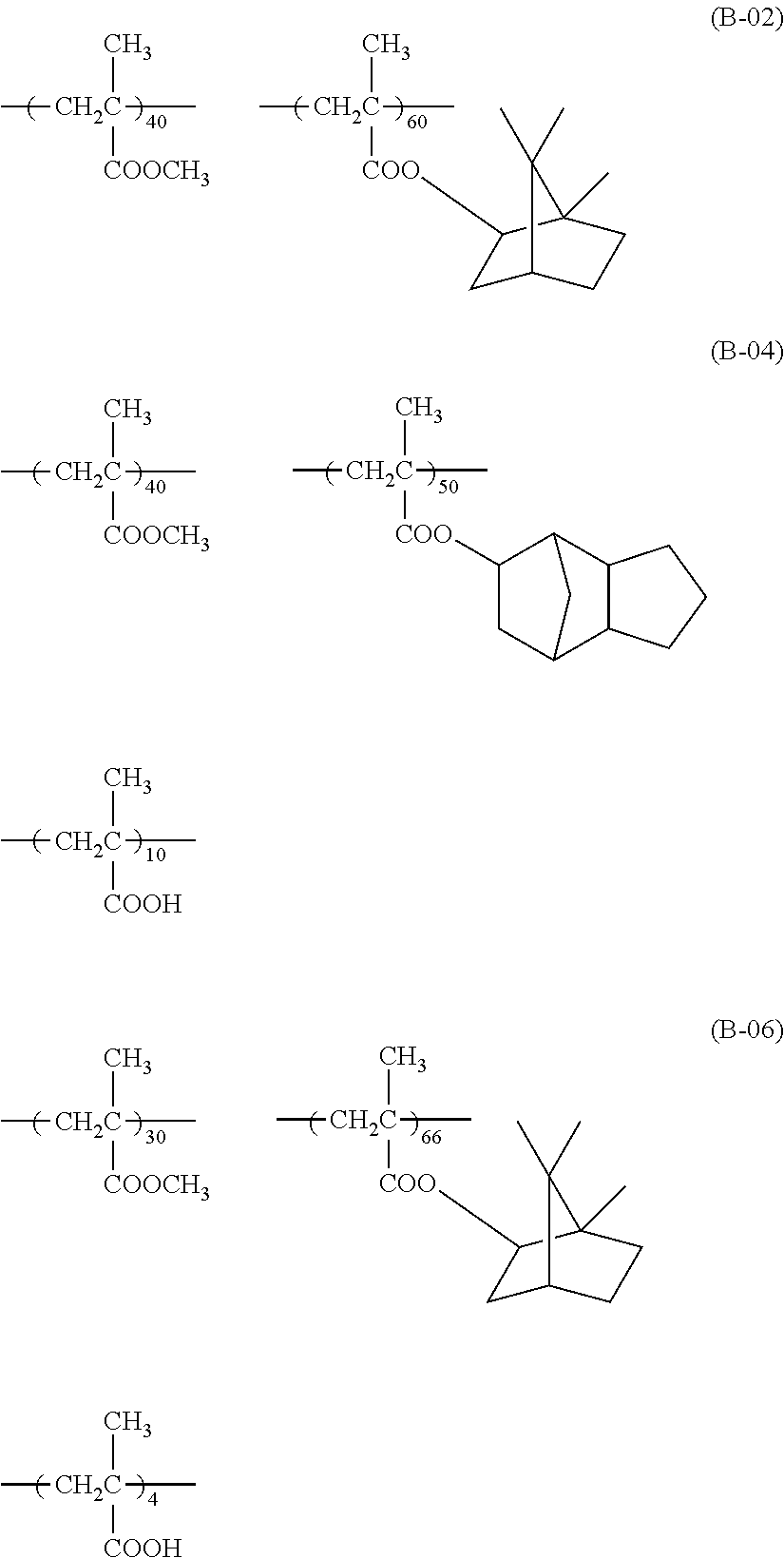Aqueous ink composition, method of manufacturing composite particles, ink set and image forming method
a technology of composite particles and ink sets, which is applied in the field of aqueous ink compositions, composite particle manufacturing methods, ink sets, and image forming methods, can solve the problems of difficult to obtain stable aqueous dispersion, difficult to apply dispersion as inkjet ink, and worse blocking, so as to improve fixability and high viscosity of aqueous dispersion
- Summary
- Abstract
- Description
- Claims
- Application Information
AI Technical Summary
Benefits of technology
Problems solved by technology
Method used
Image
Examples
preparation example 1
Synthesis of Self-Dispersing Polymer
[0311]Methylethyl ketone (560.0 g) was placed in a 2 L three-necked flask equipped with a stirrer, a thermometer, a reflux condenser and a nitrogen gas introduction tube, and the temperature was raised to 87° C. in a nitrogen atmosphere. While maintaining a refluxing state inside of the reaction vessel (thereafter, the refluxing state was maintained until the reaction was terminated), a mixed solution of 272.6 g of methylmethacrylate, 58.0 g of 2-methoxyethyl acrylate, 203.0 g of benzyl methacrylate, 46.4 g of methacrylic acid, 108 g of methylethyl ketone and 2.32 g of “V-601” (trade name; manufactured by Wako Pure Chemical Industries, Ltd.) was added dropwise at a constant addition rate to the reaction vessel so as to complete the addition in two hours. The mixture was stirred for one hour after completion of the addition, thereafter, (1) a process, in which a solution containing 1.16 g of “V-601” and 6.4 g of methylethyl ketone was added to the ...
preparation example 2
[0316]65 g of JONCRYL 67 (trade name (styrene acrylic resin); manufactured by BASF SE) was weighed and placed in a 1 L three-necked flask equipped with a stirrer, a thermometer, a reflux condenser and a nitrogen gas introduction tube, and 65 g of methyl ethyl ketone, 65 g of isopropanol, 0.98 g of 20% maleic acid aqueous solution (water-soluble electrolyte; equivalent to 0.3% with respect to the copolymer), and 190.58 g of 1 mol / L NaOH aqueous solution were added to the reaction vessel, and the temperature inside of the reaction vessel was raised to 87° C. Next, 93 g of distilled water was added to the mixture at a rate of 6 mL / minute to form an aqueous dispersion. Thereafter, after the temperature inside of the reaction vessel was maintained at 87° C. for one hour, at 91° C. for one hour, and at 95° C. for 30 minutes under atmospheric pressure, the pressure inside of the reaction vessel was reduced, and the total amount of 195.5 g of isopropanol, methylethyl ketone and distilled wa...
preparation example 3
[0318]In the preparation of the polymer aqueous dispersion (Jcr67Lx1) in Preparation Example 2, polymer aqueous dispersions of self-dispersing polymers (Jcr611) and (Jcr690) were obtained in a manner similar to Preparation Example 2, except that JONCRYL 67 was changed to JONCRYL 611 and JONCRYL 690 (trade names (both are styrene acrylic resins, carboxyl group-containing polymer); manufactured by BASF SE), the kinds and addition amounts of the water-soluble electrolyte were changed to those described in Table 1, and the addition amount of the aqueous NaOH solution was changed so as to be the same neutralization degree. The physical properties of the obtained polymer aqueous dispersions (Jcr611Lx1), (Jcr611Lx2), (Jcr690Lx1) and (Jcr690Lx2) are shown in Table 1.
PUM
| Property | Measurement | Unit |
|---|---|---|
| glass transition temperature | aaaaa | aaaaa |
| glass transition temperatures | aaaaa | aaaaa |
| volume average particle diameter | aaaaa | aaaaa |
Abstract
Description
Claims
Application Information
 Login to View More
Login to View More - R&D
- Intellectual Property
- Life Sciences
- Materials
- Tech Scout
- Unparalleled Data Quality
- Higher Quality Content
- 60% Fewer Hallucinations
Browse by: Latest US Patents, China's latest patents, Technical Efficacy Thesaurus, Application Domain, Technology Topic, Popular Technical Reports.
© 2025 PatSnap. All rights reserved.Legal|Privacy policy|Modern Slavery Act Transparency Statement|Sitemap|About US| Contact US: help@patsnap.com



